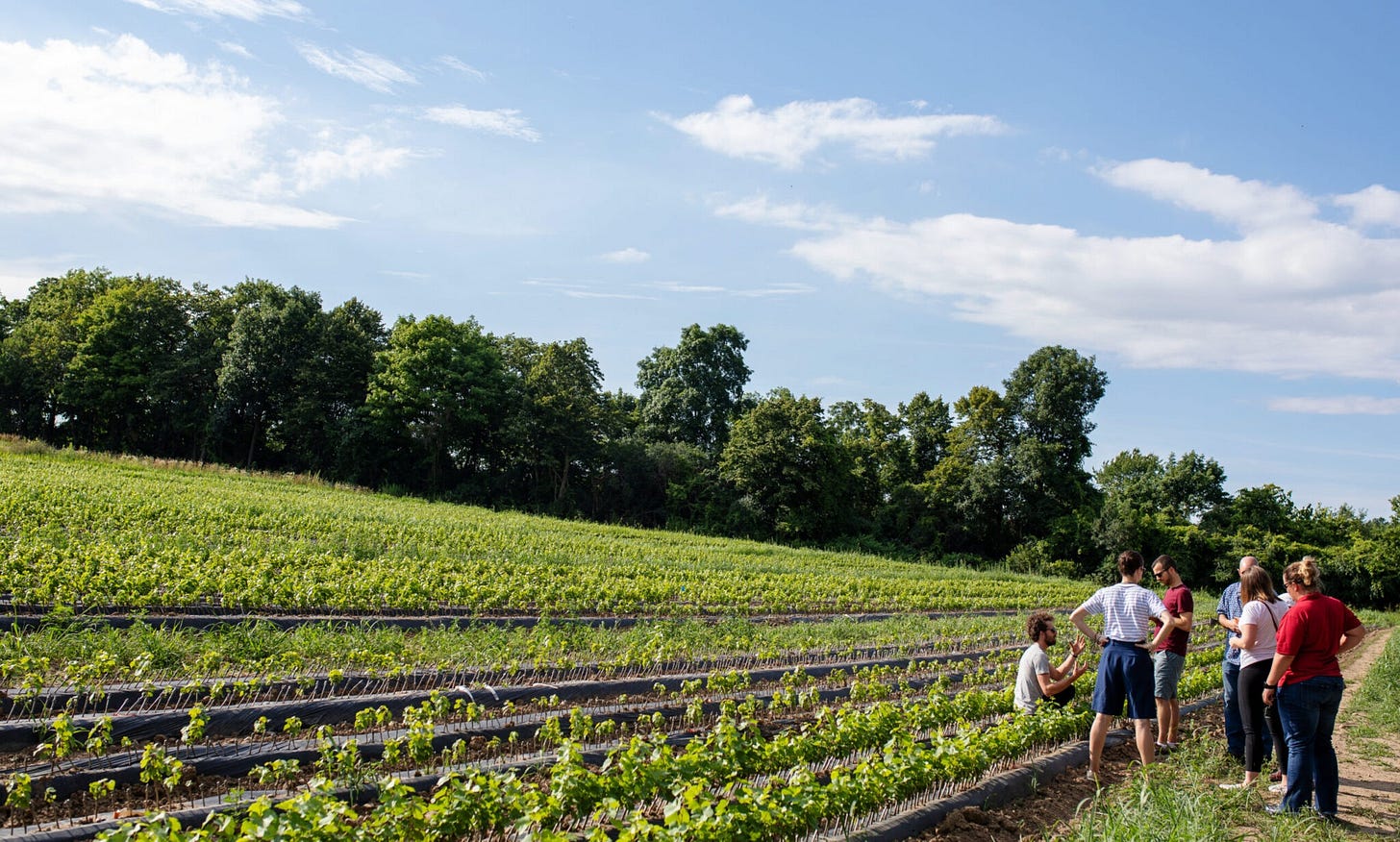New York is the clear underdog in American wine, overshadowed by the volume and global marketing power of California, and to some extent by the boutique cool of Oregon and Washington. Yet, New York is home to some of the oldest vineyards in the country and continues to a number of produce wines that can hold their own alongside bottles from Europe and the New World. That said, the path to international recognition has been uneven and is ongoing.
Hybrid Roots
New York’s winemaking history stretches back to the 1600s, with commercial wine production emerging in earnest in the 19th century. However, much of the early wine output relied on native American grape varieties like Concord and Catawba. High in acidity and unusual in character, they are used mostly for sweet wines, sacramental purposes, and table grapes. These were hardy, disease-resistant grapes but not well-suited to the production of dry, refined wines expected by global wine markets.
The shift toward European Vitis vinifera varieties like Riesling and Chardonnay came relatively late and was pioneered in the 1950s by Dr. Konstantin Frank in the Finger Lakes. His success in cultivating vinifera in cold climates helped reposition New York’s winemaking identity. Still, hybrid grapes remain common today, particularly in lower-priced and regional wines, which continue to account for a substantial portion of overall production.
Key Regions
New York’s wine landscape is dominated by five main AVAs (American Viticultural Areas), each with its own conditions and identity:
-
Finger Lakes: The best-known region, especially for Riesling. The deep glacial lakes create favorable microclimates that help mitigate frost and extend ripening.
-
Long Island: Produces Merlot, Cabernet Franc, and Chardonnay in a maritime climate reminiscent of Bordeaux, though often with lower alcohol and higher acidity.
-
Hudson River Region: One of the oldest growing areas, still working to distinguish itself beyond local markets.
-
Lake Erie & Niagara Escarpment: Focus on hybrids and Concord grapes, with a growing interest in quality-focused vinifera and ice wines.
Among vinifera grapes, Riesling stands out. It often yields crisp, mineral-driven wines with aging potential, drawing comparisons to cooler-climate German Rieslings. Cabernet Franc and Merlot from Long Island have also shown promise, though consistency is a challenge due to vintage variation and limited economies of scale.
Wine Styles
The styles produced across New York vary widely, from dry whites and reds to dessert wines and traditional method sparkling wines. At the premium end, small producers are making site-specific, low-intervention wines with clear ambition and increasing finesse. However, much of the state’s output still caters to local or entry-level markets, with wines that are sweeter, simpler, and priced accordingly. This split between artisanal ambition and mass-market practicality reflects the region’s main challenges.
Room to Grow
How do New York wines compare internationally? At the high end, some Rieslings from producers like Hermann J. Wiemer, Ravines, and Forge Cellars have earned critical praise and scored well in blind tastings against German and Alsatian peers. These successes are real but relatively isolated. In red wine, Long Island’s Bordeaux-style blends are often elegant and restrained but face stiff competition from Old World and New World wines at similar price points that offer greater depth or brand recognition.
There is also the issue of scale. Many New York wineries are small, limiting their distribution and price competitiveness abroad. For wine buyers outside the U.S., the state’s name still lacks the cachet of Burgundy, Napa, or even Marlborough. This affects not just retail but placement on export-focused restaurant wine lists.
Recognition & Realism
New York wines have received increasing attention at competitions like the International Wine Challenge and Decanter World Wine Awards, particularly in white and sparkling categories. Still, international market penetration remains limited. For now, New York’s wines are better known and appreciated by sommeliers, wine critics, and curious local drinkers rather than by the broader wine-buying public.
Whether that will change depends less on quality, and more on branding, market access, and consistent storytelling. For all its achievements, New York wine still needs clearer positioning: not just as “not California” or “Riesling from the East,” but as a region with its own voice.
More Information: https://newyorkwines.org/
Image Credit: https://newyorkwines.org/wp-content/uploads/2020/04/2019-FLX-Vineyard-Visit-Photo-Credit-to-Rima-Brindamour-102-scaled.jpg
_ _ _
© CHURRASCO PHUKET STEAKHOUSE / ALL RIGHTS RESERVED
Reprinting, reposting & sharing allowed, in exchange for a backlink and credits
Churrasco Phuket Steakhouse serves affordable Wagyu and Black Angus steaks and burgers. We are open daily from 12noon to 11pm at Jungceylon Shopping Center in Patong / Phuket.
We are family-friendly and offer free parking and Wi-Fi for guests. See our menus, reserve your table, find our location, and check all guest reviews here:
https://ChurrascoPhuket.com/
#Churrascophuket #jungceylon #phuketsteakhouse #affordablewagyu #wagyu

